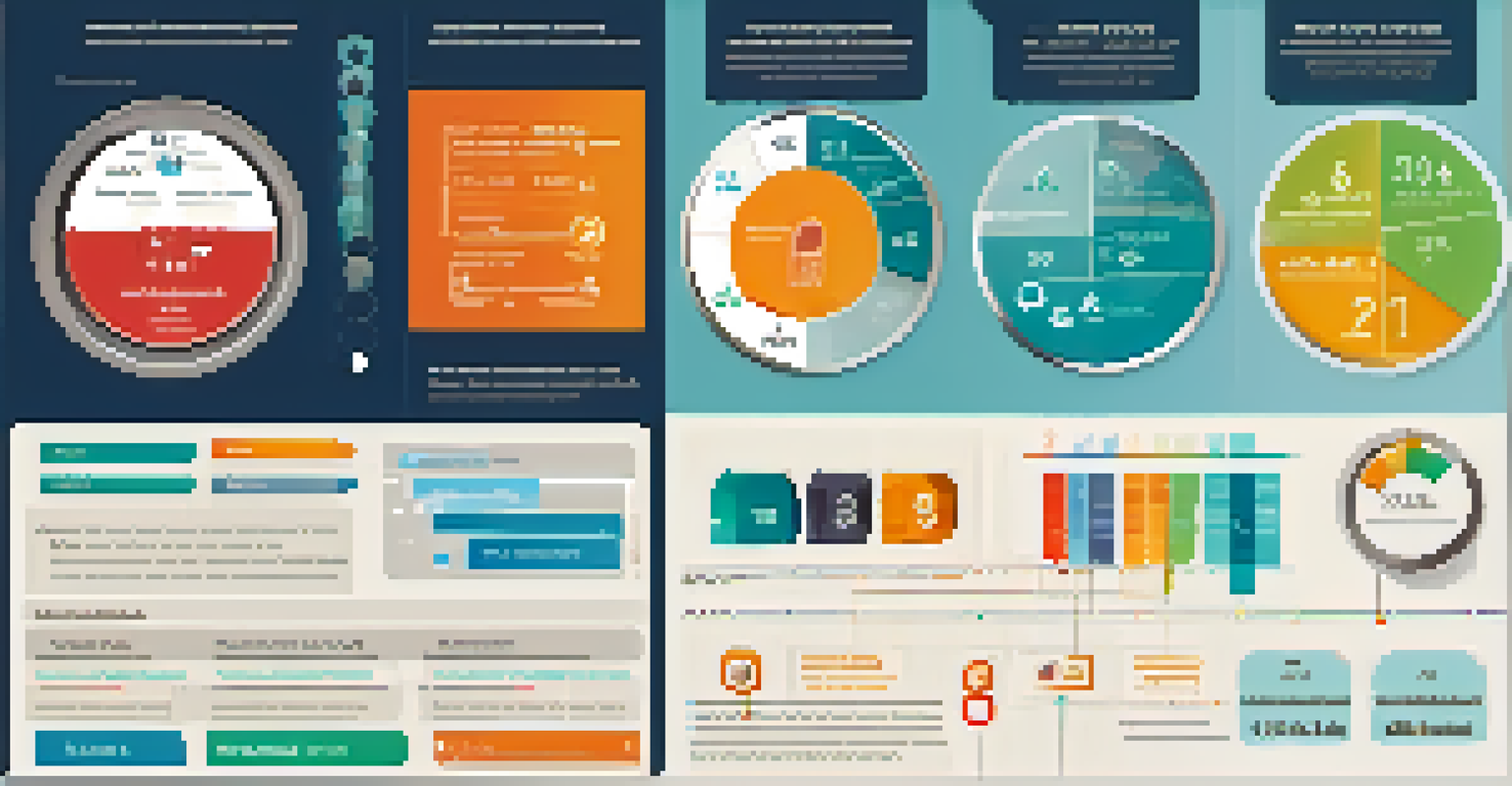Descriptive Statistics: Summarizing Health Data Effectively

Understanding Descriptive Statistics in Health Data
Descriptive statistics serve as the foundation for analyzing health data. These statistics help summarize and describe the main features of a dataset, making it easier to understand. By employing measures like mean, median, and mode, we can obtain a clearer picture of health trends and outcomes.
Without data, you're just another person with an opinion.
In the realm of healthcare, where data can be overwhelming, descriptive statistics act like a spotlight. They shine a light on key characteristics and allow healthcare professionals to make informed decisions. For instance, if a clinic sees a spike in patient visits, understanding the average age or common diagnoses can guide resource allocation.
Ultimately, descriptive statistics provide a way to translate complex data into simple summaries. This makes it not only easier to communicate findings but also to identify areas needing further exploration or intervention.
Key Measures: Mean, Median, and Mode Explained
Mean, median, and mode are the trifecta of descriptive statistics. The mean is the average, found by adding all values and dividing by the number of observations. If we consider patient blood pressure readings, the mean gives us an overall idea of the group’s health status.

The median, on the other hand, is the middle value when data is arranged in order. This is particularly useful in health data where extreme values (like outliers) can skew the mean. For instance, if most patients have normal blood pressure but one has a very high reading, the median provides a more accurate picture of typical patient health.
Descriptive Stats Simplify Health Data
Descriptive statistics help summarize and describe key features of health data, making it easier for professionals to understand trends and outcomes.
Lastly, the mode is simply the most frequently occurring value in a dataset. In a healthcare setting, identifying the mode can reveal the most common condition among patients, helping clinics prioritize their services effectively.
Visualization: Graphs and Charts for Clarity
Visual aids like graphs and charts are invaluable in presenting descriptive statistics. They transform raw data into easily digestible formats, enabling quick comprehension. A simple bar graph showing the number of patients by age group can instantly inform a clinic about their demographic composition.
In God we trust; all others bring data.
Pie charts can effectively illustrate proportions, such as the percentage of patients with different health conditions. This visual representation can foster discussions about resource allocation or targeted health campaigns tailored to the largest segments of the population.
Using visual tools not only enhances understanding but also engages stakeholders. When data is presented visually, it invites questions and encourages collaboration among healthcare teams, ultimately leading to more informed decisions.
Importance of Standard Deviation in Health Data
Standard deviation is a key measure that indicates how much variation exists within a dataset. In the context of healthcare, it helps understand the consistency of health outcomes. For example, if a clinic measures the weight of patients, a low standard deviation would suggest that most patients are close to the average weight.
This measure allows healthcare providers to identify outliers or unusual cases that might require special attention. If one patient’s weight significantly deviates from the norm, further investigation may be warranted to understand underlying health issues.
Visuals Enhance Data Understanding
Graphs and charts transform raw data into easily digestible formats, facilitating quick comprehension and fostering collaboration among healthcare teams.
Thus, standard deviation not only adds depth to descriptive statistics but also aids in quality control in healthcare. It emphasizes the importance of monitoring health metrics and ensuring they remain within expected ranges.
Using Percentages to Communicate Health Outcomes
Percentages are a powerful tool for summarizing health data, especially when comparing groups. For instance, if a study finds that 30% of participants experienced side effects from a medication, it provides a clear context for understanding the drug's safety profile. This kind of summary helps stakeholders gauge the risks versus benefits.
In public health, percentages can convey critical information about disease prevalence. For example, if 10% of a population is diagnosed with diabetes, it highlights the need for targeted health initiatives and resources to manage this chronic condition.
Moreover, percentages make it easier to communicate findings to a broader audience, including patients and policymakers. They simplify complex data, making it relatable and actionable.
The Role of Data Cleaning in Descriptive Analysis
Before diving into descriptive statistics, data cleaning is a crucial step that cannot be overlooked. This process involves identifying and correcting errors or inconsistencies in the dataset, ensuring that the analysis is based on accurate information. For instance, removing duplicate patient records can prevent skewed results.
Cleaning data also means handling missing values appropriately. Whether by imputing values or excluding incomplete cases, this step is vital for maintaining the integrity of the analysis. A dataset with too many gaps can lead to misleading conclusions, especially in clinical settings.
Data Cleaning Ensures Accurate Analysis
Cleaning data is essential for reliable descriptive statistics, as it corrects errors and inconsistencies, laying the groundwork for informed decision-making.
Ultimately, the effort put into data cleaning pays off in the reliability of the descriptive statistics derived from the data. Well-prepared data lays the groundwork for insightful analysis and informed decision-making in healthcare.
Challenges in Summarizing Health Data
Summarizing health data isn’t without its challenges. One significant hurdle is the presence of outliers, which can distort statistical measures. For example, if one patient has an exceptionally high blood pressure reading, it can skew the mean, making it appear that the overall group is at higher risk than they truly are.
Another challenge is ensuring the dataset is representative of the population being studied. If a study only includes data from one demographic, the findings may not be applicable to the broader community. This can lead to misinterpretations and ineffective health interventions.

Lastly, conveying complex statistical information in an understandable way is often difficult. Healthcare providers must balance technical accuracy with the need for clear communication, especially when discussing data with non-experts.